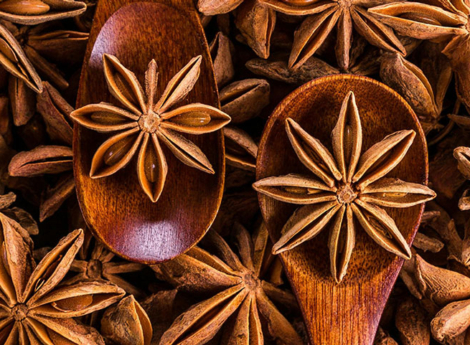Cigar Journal - tasting guide
We've designed a simple diary to help you record your tasting experiences.
Our main advice is to trust your instincts and let your emotions guide you. All your perceptions will be based above all on your own "palate of the senses". You will use your five senses to fully appreciate (or not) each moment of tasting.

The sense of smell accounts for up to 80% of the information perceived when consuming a food (Murphy et al. 1977) or a cigar. For example, the smell of hot coffee in the morning can be detected from another room, and the aroma becomes stronger when you put it to your lips.
This is why aromas and flavours play a crucial role in tasting, although the other senses should not be neglected.
The visual aspect of the wrapper's colour, the feel of its veins or its smoothness, its colour, its raw draw, the sound of the tobacco when you light it: each of your 5 senses will be stimulated.
In the meantime, immerse yourself in this guide, whose aim is simply to help you become aware of the intuitive stages of tasting through the 5 senses, while keeping one thing in mind: the journey is yours and you alone are the expert on your own wine. "palace of the senses".
The palace of the senses

This notion comes straight from the film... Sherlock Holmes 🙂 With the help of the talent of Benedict Cumberbatch, Sherlock repopularised the detective, with his famous " mental palace" .
More seriously, it's a method that allows us to 'revisit' the memories we've made, by taking a starting point that allows us to reconstruct a moment, a memory, a tasting, an emotion. It's called "Loci method and is initially used to store long lists of ordered items.
Our Blue Smokeuse uses this method every day to memorise tastes, flavours, smells and feelings. She inventories them in her "palate of the senses". This simple method just requires a little concentration and a lot of practice (oh dear :-). You can use it on a daily basis, with everything around you. Toast, its smell, its texture, the feel of hot coffee in your mouth and the bitterness on your gums. It's regular training that will make it easier for you to recognise aromas and flavours, and help you refine... your affinities!
First step: note the context of your tasting
This may seem basic, but it is important to note the context of your tasting: where it took place, when it took place, what "technical" aspects make up the cigar (origin, format, etc.). This will allow you, when the time comes, to immerse yourself in your tasting, like one of Proust's madeleines. Very quickly, you will come up against subjective elements, as the 'momentum' (the moment when you particularly enjoyed the cigar) or the company you were with will have a significant influence on your tasting. For example, a Davidoff signature cigar may not taste as good after an argument with your mother-in-law as it does on the shores of a paradise beach in Punta Cana. So make a note of as much information as possible to help you find your way through time.
The visual
Look closely at the cape. It will tell you two valuable things: the colour and the appearance of the cape. Is the cape taut? Are the ribs visible? Is it smooth, are there any imperfections? All the visual information will be useful for an initial visual approach to the vitola.

We can also classify its shade, from Claro claro to Oscuro (source of image: https://fr.wikipedia.org/wiki/Cigare). And be watch out for false friendsJust because a cigar is dark doesn't mean it's powerful, and vice versa! Find out more here.

The ring will also be useful, particularly for those with a good eyesight, as a reminder of a tasting experience. This in no way detracts from the care and aesthetics that producers put into their rings, which generally all have a story behind them. For example, the West Tampa Attic Series #1 proudly displays a chaveta - the symbol par excellence of torcedors and their meticulous work. Its rounded shape enables the wrapper leaves of the cigars to be cut with a single stroke of the blade.
The appearance of your smoke will also be an important part of your tasting experience. Dense, thin, blue, white: take a moment to observe how it behaves.

Touch
Let's move on to touch. No, you haven't lit your vitola yet! The cape may feel rough, soft or smooth under your fingers: close your eyes and let your touch reveal the subtleties of this examination.
An example of an atypical cape is the BX3 CADwith a pleasantly rough cape that tells a story in itself.
For a deeper experience, let your fingers run through the ring. The choice of paper is not left to chance. Some manufacturers have even taken things a step further by offering embossed metal rings, such as the cigars in the Royal Return by ADVentura Cigars
Let's light that cigar and move on to another essential aspect of touch. The draw. It's the sense of touch that really comes into play. Tight, loose, pleasant, sometimes unfortunately blocked, it will be a key element in the pleasure of tasting.
Flavours and aromas
Not to be confused, flavour and power are two very distinct elements. This is one of the most difficult stages and the one that requires the most training. You can have fun coming up with clever words and impressing the gallery. But let's take the simplest method: connect with your sense palate. What you smell and feel will almost automatically be linked to a memory. Not necessarily to an event you've experienced (although we think it's easier if you have), but to a familiar flavour. For example, a toasted side will remind you of the smell of toast. The brioche side may remind you of the cakes your grandmother used to bake, or simply the pleasant smell of a bakery.

A large number of "wheel of flavours have been made to identify the different flavours. We recommend the Confederation's agroscopeThe Whisky Flavour Wheel can be used to taste cigars.
The one we are proposing is a simplified version, which allows you to recognise the major aromatic 'families'.
Defining these flavours will be very useful for grant your cigar with drinks or food. To learn more about the basics of pairing, read our article on agreements.
The power
Power, on the other hand, is classified by the sensation of heat and spiciness that fills your palate. It refers to its overall intensity, which encompasses both the physical strength and the impact of the flavours. A cigar's strength comes from three main factors:
The type of tobacco used : Tobacco contains nicotine, and certain varieties of leaf, such as the ligeros (leaves at the top of the plant, exposed to the sun), are richer in nicotine. These leaves add strength to the composition of the cigar.
Ageing and fermentation Tobacco processing plays a crucial role. The more the tobacco is fermented and aged, the more the flavours can develop, but this can also attenuate or intensify the potency depending on the process.
Blending leaves The combination of different parts of the plant ( ligero, seco and volado) affects the strength. Cigars with stronger leaves will have a higher intensity.

Above all, keep in mind that the most important thing is..,
is your pleasure of smoking a cigar.
To find out more
-

Cigar Journal - tasting guide
We've designed a simple diary to help you record your tasting experiences. Our main advice is to trust your instincts and let your emotions guide you. All your perceptions will be based above all on your own "palate of the senses". You will use your five senses to appreciate (or not)...
-

Agreements
The taste qualities of food and drink interact with each other and can distort the perception of tastes and flavours. For example, if you drink wine X with a sweet dessert, the wine may seem too acidic. On the other hand, if you drink the same wine X with a salad accompanied by an acidic dressing,...
-

Basic principles of sensory analysis
Pierre à fusil, sol forestier, vétiver... Adjectives to get lost in. Wine lovers who work with specialists in the field of taste could quickly get lost in a jungle of learned terms. But isn't tasting simply a matter of emotions? Let's go back to the basics. The human being is endowed with 5 senses, which...
-

A history of spices
We often speak of spicy notes to describe a cigar, in a rather generic way. And yet, the world of spices is practically infinite. A rare commodity with magical or curative properties, the spice route has also played a major role in global economic development. Spices and aromatics have certainly been...
-

Tips on storing cigars
Cigar storage is essential to guarantee a great taste experience, even if the vitolas are not consumed immediately. For occasional smokers or cigar aficionados who want to keep a fine collection on hand, we recommend that you store your cigars with care, so that the flavour of your cigars...
Read our cigar reviews





